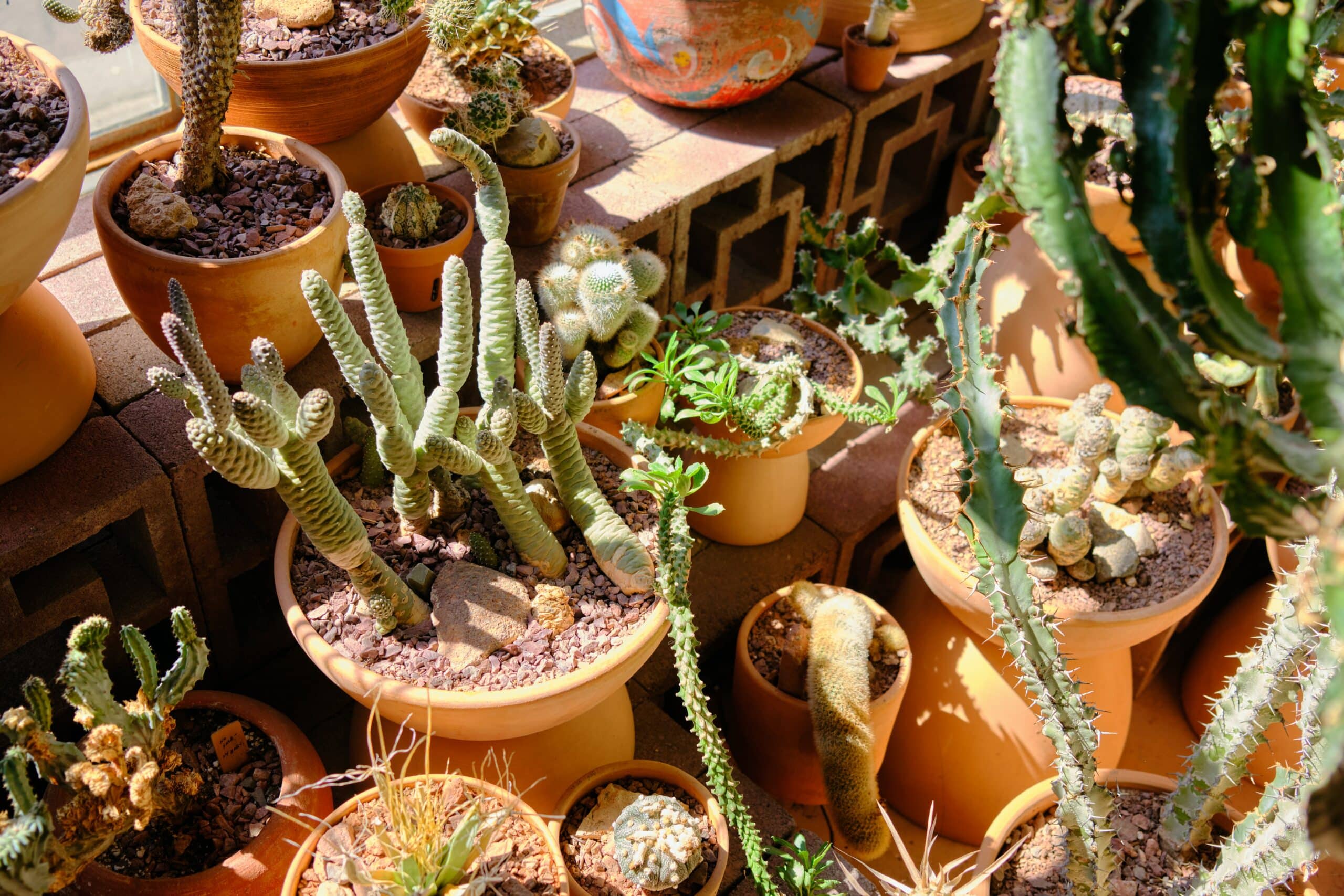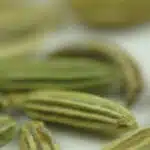Catnip is a popular herb that not only cats love, but humans too. It has many uses, from tea and culinary creations to medicinal salves and tinctures. But have you ever thought of growing your own catnip plants? With a little bit of effort and the right knowledge, it can be done!
The notion of growing your own catnip plants may seem overwhelming at first. After all, most people think that herbs are for experts only. However, this couldn’t be further from the truth. Growing catnip is simple and requires minimal care and maintenance. Whether you’re an experienced gardener or just starting out with herbs, there’s something here for everyone!
In this article we will discuss how to grow catnip plants in detail. We’ll explore the various requirements involved such as soil type, watering needs, light exposure and more. Plus, we’ll even provide some helpful tips on harvesting and storing your catnip so that it stays fresh for as long as possible. So don’t wait any longer – let’s get started on your journey to growing delicious catnip!
Choosing A Location To Plant Catnip
First, let’s talk about where to grow catnip. This herb is a hardy perennial and can be grown both indoors and outdoors. If you’re planting it outside, pick a spot in full sun with well-draining soil or potting mix. Make sure the area is free of any weeds, as these can compete with your catnip for vital nutrients.
When it comes to picking the perfect spot, don’t forget that cats love to roll around in fresh catnip and rub it all over their bodies. So if you’re looking to keep Fido away from your precious crop, opt for an area that’s out of his reach!
Your next step is to choose how you want to plant your catnip: from seed or from cuttings. If you go the seed route, make sure you select a variety that will thrive in your climate zone — it’ll save you time and energy down the line!
Planting Catnip From Seeds
Growing catnip from seeds is a great way to bring color and texture to your outdoor space. This herb’s unique foliage and scent can create a calming atmosphere in any area of your garden. But, it’s important to make sure you have the right conditions for germination before planting catnip from seeds.
When starting your catnip plants from seed, look for an area that has full sun exposure for at least 4-6 hours of direct sunlight per day. The soil should be well-drained with a slightly acidic pH balance of 6.5 or lower. It’s also beneficial to mix organic matter like compost or peat moss into the soil prior to planting.
Once you’ve found the perfect spot, it’s time to plant! Plant the seeds about 1/8 inch deep and spaced 2 inches apart in rows that are 12 inches apart. After sowing, cover lightly with soil and water regularly until seedlings appear in 8-14 days. Once they sprout, thin out any extra plants so that each catnip has enough room to grow properly. With a little patience and care, you’ll soon have a thriving patch of this aromatic plant!
Planting Catnip From Transplants
Growing catnip from transplants is a great alternative to growing from seeds, as it can yield results much faster. According to research, 80% of adult cats love catnip and will benefit greatly from having access to the plant. Therefore, planting catnip from transplants is a great way to give your furry friend something they’ll love!
When planting catnip from transplants, choose plants that are healthy and don’t have any signs of disease or pests. If you’re planting multiple plants in one pot, make sure to leave enough space for them to grow properly. Additionally, ensure that the transplanted plants receive plenty of sunlight and stay adequately hydrated. This can be done by watering them every day or two if there is no rain in the forecast.
For optimal growth and health, feed your catnip plants with a balanced fertilizer every month or so. Make sure to follow the instructions on the package carefully so that you don’t end up over-fertilizing the soil and causing damage to your catnip plants. With proper care and attention, your catnip plants should thrive and provide your kitty with hours of fun!
Caring For Catnip Plants
It’s been said that cats can be picky when it comes to their preferences for plants. But, could it be true that there is one plant that all cats love? That plant just might be catnip! Catnip is a member of the mint family and has a distinct smell that cats are drawn to. So, if you’re looking to make your feline happy, caring for catnip plants could be the answer.
When it comes to planting catnip, you have two options: starting from seeds or transplants. Transplants are already-established plants and can give you quicker results. Caring for catnip plants is relatively easy; they just need plenty of sunlight and well-drained soil. Keep in mind that catnip can grow quickly and spread widely, so make sure you give them enough room to grow.
To ensure your catnip plants stay healthy, water them weekly or whenever the soil feels dry about one inch down. If your climate gets hot during the summer months, you may want to water more often to keep the soil from drying out completely. You’ll also want to regularly trim your plants back if they get too big or unruly – this will help encourage new growth and keep them neat and tidy.
With proper care and maintenance, your catnip plants should thrive! Your furry friend will thank you with plenty of purrs and snuggles as they enjoy their fragrant treat!
Watering Catnip Plants
Watering a catnip plant is an important part of its upkeep. It’s easy to over-water, so make sure that the soil is dry before you start. To avoid waterlogging, use a shallow dish or pot and water from below. This will also help keep the leaves dry, making it harder for fungus and other diseases to take hold.
Be strategic about watering your catnip plant. Water late in the day, when temperatures are cooler and there’s less wind to evaporate the moisture. Also, don’t water too often—once a week should be enough during times of drought or extreme heat. When it rains, let nature do its job and leave your catnip alone!
Remember to monitor your catnip plant’s soil frequently to gauge how much water it needs. If the leaves are wilting or browning, it may need more water than usual to stay healthy. With careful attention and a bit of luck, your catnip plant will thrive with proper watering! Moving on to the next step in caring for this delightful herb: fertilizing catnip plants.
Fertilizing Catnip Plants
Fertilizing catnip plants is an important part of ensuring their health and growth. It’s the sixth step in cultivating catnip, but one that shouldn’t be overlooked.
To ensure your catnip plants are getting all the nutrition they need, here are a few tips:
- Use a balanced fertilizer with a 10-10-10 or 5-5-5 ratio.
- Apply the fertilizer once every 6 to 8 weeks during the growing season.
- Avoid over-fertilizing, as too much nitrogen can cause burning or wilting of the leaves.
When you know how and when to fertilize, you can make sure your catnip plants are getting the right amount of nutrition for optimal growth. Applying the right type of fertilizer at regular intervals is key to having healthy and happy catnip in your garden!
By avoiding common mistakes like over-fertilizing, you can give your catnip plant the best chance to thrive without becoming vulnerable to pests and diseases down the line. Taking these steps now will help protect your plants and keep them growing strong for years to come!
Controlling Pests And Diseases
From time immemorial, plants have been subject to the whims of pests and diseases. As such, controlling these is an important part of growing catnip plants. You don’t want your plants to become overwhelmed with bugs or succumb to a fungal infection. Here’s how you can keep your catnip plants healthy and strong.
First off, a good preventative measure for controlling pests and diseases is proper care for your catnip plants. Make sure that you are giving them adequate water, sunlight, and nutrients, as this will help them stay healthy from the get-go. Additionally, check on your catnip plants regularly to detect any signs of pests or disease early on so that you can address it quickly before it gets out of hand.
To help control pests more directly, there are various sprays available at most garden centers that can be used on your catnip plants. Be sure to read through the instructions carefully before applying the spray in order to ensure that it works correctly and safely. Additionally, using companion planting can also be beneficial in helping to reduce the number of pests in your garden while allowing beneficial insects like bees and butterflies to thrive.
By following these steps, you can make sure that your catnip plants stay healthy and strong throughout their lifespan without succumbing to any pesky critters or fungal infections! Now let’s move onto pruning your catnip plants for optimum growth…
Pruning Catnip Plants
Many gardeners don’t realize that pruning catnip plants is an important part of their upkeep. In fact, studies show that up to 30% of all gardening time is spent on pruning and other maintenance activities. Pruning your catnip plants helps them stay healthy, so it’s important to understand how and when to do it.
The best time to prune your catnip plants is in late winter or early spring, just before the new growth begins. At this time, you should remove any dead or damaged leaves and stems as well as any weak or spindly growth. This will help encourage strong new growth and help keep the plant looking tidy throughout the growing season. You can also trim back some of the taller stems to encourage a bushier shape if you wish.
When pruning catnip plants, be sure to use clean sharp scissors or shears. This will help ensure that you make nice clean cuts which will reduce the risk of infection and damage to the plant. Also be sure not to remove too much at once – a little bit goes a long way! With regular maintenance, your catnip plants will stay healthy and happy for many years to come. As we transition into discussing growing catnip in containers, remember – proper care is key!
Growing Catnip In Containers
Growing catnip in containers is a great way to provide your cats with fresh, homegrown treats. It’s also an ideal option for those with limited outdoor space and can be easily managed indoors or on a balcony. Like all plants, however, catnip needs proper care in order to thrive. Here are five tips for growing catnip in containers:
First, choose a pot that’s large enough for the plant’s root system and provides adequate drainage at the bottom. Planting the seeds in nutrient-rich soil can help ensure that your catnip will grow strong and healthy. Regular watering is also essential; water the plant until the entire container is moist but not soggy. Make sure it gets plenty of sunlight by positioning it near a window or outside, if possible. Finally, use fertilizer to give your catnip plants an extra boost throughout its growth cycle.
When it comes to caring for your cats’ favorite outdoor treat, don’t forget about pest control either. Catnip can be susceptible to certain pests such as aphids and spider mites, so keep an eye out for any signs of infestation and address them quickly with natural solutions like neem oil or insecticidal soap. With these simple steps you can help protect your catnip while giving your furry friends a safe and healthy snack they’ll love!
By providing adequate soil nutrition, light levels and frequent watering, you’ll have no problem getting your containers of catnip up and running in no time – allowing you to reap the rewards of harvesting this popular herb!
Harvesting Catnip
Harvesting catnip is an exciting milestone in your gardening journey. Once the herb has reached full maturity, it’s time to reap the rewards of your hard work! Here’s a few tips to help you get started:
- Make sure your plants are well-established before harvesting. This means waiting until mid-summer when the stems and leaves are at their fullest.
- When gathering your crop, only take what you need as this will ensure that there is enough for next season’s growth.
- Don’t be afraid to experiment with different methods of harvesting – trimming, snipping or cutting can all produce great results!
When harvesting catnip, keep a close eye on the weather. Catnip likes dry conditions and if it gets too wet it can become moldy. It’s best to harvest on a sunny day and make sure you have plenty of time to get the job done quickly. Gather up any clippings and dispose of them properly so they don’t spread any diseases to other plants in your garden.
With your catnip harvest now complete, it’s time for another important step: drying the leaves for storage. Drying catnip correctly keeps its flavor and potency locked in for months after harvest – something that every feline enthusiast should strive for!
Drying Catnip For Storage
Drying catnip for storage is an important step in the process of growing catnip. In fact, according to a 2017 survey conducted by the National Gardening Association, 8 out of 10 people who have grown catnip said drying it was one of the most rewarding parts. To make sure your dried catnip is properly stored and ready for use, here are three tips:
First, spread the cuttings on a flat surface outdoors and let them sit in direct sunlight for several days. This will help ensure that all the moisture is completely removed from the plants. Second, once dried, store your catnip in an airtight container or bag. This will help keep it fresh and free from pests and moisture. Lastly, avoid storing your catnip in plastic containers as they can promote mold growth.
Once you’ve followed these steps to dry your catnip, you’re ready to start propagating more plants! The best way to propagate more catnip is by taking cuttings and planting them directly into soil or water. With just a little bit of effort you can easily grow more plants to enjoy at home or share with others!
Propagating Catnip
Propagating catnip, like any other plant, is a breeze if you know what you are doing. It is almost second nature to those who have green thumbs and take a liking to gardening. Sprinkling the seeds of this herb into your garden is like watching magic unfold in front of your eyes. Like a butterfly emerging from its cocoon, the new catnip plants will shoot up from the ground and thrive before you know it! Here’s how:
Firstly, collect the seeds from mature catnip plants and spread them evenly across the soil surface. Once done, water them in and keep an eye on the soil for signs of growth. Secondly, when seedlings appear – thin them out to allow enough space for their roots to expand and for air circulation around each plant. Lastly, give them a little more love by adding some fertilizer or compost to ensure they continue growing strong.
The key to successful propagation is patience and consistency. As long as you provide your plants with adequate sunlight, nutrients and water they will reach maturity in no time! The result? A beautiful array of healthy catnip plants that not only look great but also have plenty of uses – both medicinal and culinary! So, don’t be afraid to get your hands dirty – propagating catnip has never been easier!
Common Types Of Catnip
When it comes to catnip, there are several varieties that can be grown and enjoyed. For those looking to add a bit of extra delight for their feline friends, there are some common types of catnip available.
Catmint plants (Nepeta) come in many varieties, and these perennial plants can easily be grown from seeds or cuttings. Catmints tend to be hardy plants that produce clusters of delicate flowers in shades of pink, blue, or white. The leaves are usually soft and fragrant, which cats find irresistible!
Silver vine is another popular type of catnip among felines. Unlike other catnip varieties which only have a mild effect on cats, silver vine has a more powerful scent and can have an intense reaction on cats when they smell it. As such, silver vine is often used as an alternative to traditional catnip if your kitty isn’t responding to it.
TIP: If you’re looking for something special for your kitty companion, consider growing some silver vine instead of traditional catnip – they just might love the intense reaction they get from its scent!
Toxicity Of Catnip
Have you ever wondered if catnip is toxic to cats? While it’s natural for cats to love the pungent odor of this plant, it may be dangerous in large doses. In this article, we’ll discuss the toxicity of catnip and its uses.
First of all, let’s explore the effects of catnip on cats. It has a narcotic-like effect on cats, and they can become quite intoxicated when given too much. The active ingredient in catnip is nepetalactone, which acts as a stimulant for felines and causes them to become more energetic and playful. However, it should be noted that the effects are not permanent; they usually wear off after a few minutes or so.
In terms of safety, it is important to understand that while catnip can cause intoxication in cats, it is generally considered non-toxic and harmless when used in moderation. For example, it can be safely given to kittens as young as four weeks old without any adverse reactions. That said, larger doses should be avoided as they can lead to vomiting, diarrhea or other digestive issues in some cats.
Overall, while catnip is not necessarily toxic when given in moderation, there are still risks associated with giving your feline friend too much at once. Therefore, it’s important to know the proper dosage for your pet before introducing them to this plant. Next up we’ll look at some of the uses for catnip beyond just entertainment for our furry friends!
Uses For Catnip
Catnip is a versatile plant that can be used for so much more than just making your cats happy. From being an ingredient in herbal teas to using it to make wreaths, there are many uses for catnip. Let’s take a look at some of the ways you can make use of this beneficial herb.
First of all, catnip makes a great addition to herbal teas and other drinks. It has calming and soothing effects on humans, which makes it perfect for those looking for a way to relax after a long day. You can also use it as a seasoning when cooking up some delicious meals. Not only does it add flavor and aroma, but its natural antiseptic properties will help keep your food safe from bacteria.
Secondly, catnip can be used in crafting projects like wreaths and decorations. Its unique leaves and clusters of flowers make it an attractive choice for adding color and texture to any space. Plus, due to its strong scent, catnip is often used as an insect repellent in gardens or around the home! This makes it a great way to keep pests away without having to resort to harsh chemicals or sprays.
Catnip certainly has many uses beyond simply pleasing our feline friends – from providing health benefits to helping repel insects from our homes. Whether you’re looking for something to add flavor to your recipes or want something attractive for your craft projects, catnip is definitely worth considering!
Frequently Asked Questions
What Is The Best Time Of Year To Plant Catnip?
The best time for sowing catnip seeds is the sweet spot between winter and spring when the soil is still cool but the days are growing longer. It’s a period of transition, much like planting catnip itself can be – a bridge from the dormant season to a new period of growth.
The ideal time for transplanting young catnip plants is when they’ve grown several inches tall and have 2-3 sets of true leaves. This usually happens in late spring or early summer when there’s plenty of sunlight and rain to support their growth. If you’re starting your catnip indoors, give it about 6 weeks before you move it outside.
With just a little patience and some tender loving care, you can create an oasis in your garden that will make both cats and people purr with delight! To do this, make sure your catnip plants get plenty of sunlight, water them regularly during dry spells, and trim back any flower stalks that appear to keep them healthy and thriving.
How Much Sunlight Does Catnip Need Each Day?
Catnip plants, a blooming delight that not only bring joy to cats, but also to any gardener who appreciates its beauty. But to ensure that the catnip plant can flourish and bring joy, one must take care in understanding how much sunlight it needs each day. A gardener has to understand the importance of this if they want the catnip to thrive.
Like any other plant, sunlight is essential for catnip plants. But just how much does this fragrant herb need? The answer lies in understanding its needs and providing it with an optimal environment. Here are some key points:
- Catnip should get 6-8 hours of direct sunlight each day for optimal growth
- During periods of extreme heat, a little less light will suffice
- If grown indoors, place near a south facing window for maximum sunlight exposure
- If growing outside in the garden, make sure there is ample space between plants so sunlight can reach all parts
By giving the catmint adequate amounts of light each day and providing an optimal environment for it to grow, you can ensure that your catnip thrives and brings joy both to cats and all those who appreciate its beauty. With proper care and attention your precious plant will be here for many years to come!
How Often Should I Water My Catnip Plants?
Watering plants is often compared to nurturing a child. You have to be consistent in order to ensure that the plants remain healthy and strong. Catnip plants, in particular, can be tricky to take care of since they require special attention and regular maintenance.
Just like our beloved children, catnip plants need an adequate amount of water in order to survive. Over-watering or under-watering can easily lead to their demise, so it’s important to get the right balance.
Therefore, when it comes to watering your catnip plant, you should aim for consistency rather than quantity—make sure that you give your catnip enough water on a regular basis; however, be mindful not to overwater them either. Additionally, pay attention to the soil around the plants and water more frequently if needed. With proper care and attention, your catnip plant will stay happy and healthy!
How Do I Know When To Harvest My Catnip?
Cultivating catnip can be a rewarding experience for anyone looking to get creative with their gardening. But after eagerly planting those seeds and carefully tending to the soil, there comes a time when it’s time to reap the rewards of your hard work. So how do you know when it’s time to harvest your catnip? Here are five tips for harvesting the perfect crop:
First, take a look at the stems of the plants. When they turn brown and brittle, that’s an indication that they’re ready for harvest. Second, pay attention to the scent of the leaves. If they have a strong minty aroma, then that means it’s likely time to harvest them. Third, check on the size of the leaves – if they’re big and full-grown, then that’s another sign that they are ripe for harvesting.
Next, if you want to dry out your catnip leaves before using them in teas or sachets, keep an eye on them once you’ve harvested them from the garden. Keep an eye on their color – as soon as they start turning from green to yellowish-brown and begin to feel crispy between your fingers, then it’s time to remove them from heat so they don’t burn up or become too dry.
Finally, take some time to enjoy your newly-harvested catnip! Whether you plan on using it medicinally or just giving it as a treat for your cats and other furry friends, this fragrant herb can add some unique aromatics into any home – making for an overall enjoyable experience!
How Can I Tell If My Catnip Plants Have A Pest Or Disease Problem?
Nobody likes to see their beloved plants ailing, especially when it’s a prized catnip plant. But how can you tell if your catnip plants have a pest or disease problem? The good news is that it isn’t too hard to spot problems with catnip, so you can jump into action as soon as possible.
The first way to check for pests and diseases is to inspect the leaves of your plants. Look for any discoloration, yellowing, holes, or other deformities. These could all be signs of a pest infestation or fungal infection. You may also want to look for small insects on the leaves, which could indicate an infestation of aphids or another bug species.
Next, look at the stems and roots of the plant. If there are lesions on the stems or root rot, these could be signs that your plant has contracted a fungal infection. Additionally, if you notice wilting stalks or stunted growth, this could mean that your catnip is being affected by an insect infestation or environmental stressors such as drought or too much water.
By taking the time to inspect your catnip plants regularly and looking out for symptoms of pests and diseases, you can protect them from further damage and keep them healthy and blooming in no time!
Conclusion
Growing catnip plants is an easy and enjoyable way to provide your cats with hours of entertainment. Although it may seem like a time-consuming task, the process of growing catnip is actually quite simple. With the right amount of sunlight, water, and care, you can have a thriving garden of catnip in no time.
The only potential downside to growing catnip is the possibility for pests or disease to affect your plants. However, with regular inspection and proper maintenance of your plants, any issues can be addressed quickly before they become a major problem. In addition, there are many natural solutions to controlling pests or diseases that will not harm your cats or other animals in your home.
Overall, growing catnip is a great way to keep your cats happy and entertained. Not only do cats love the scent and taste of fresh catnip, but having their own supply can also help save money over buying store-bought toys and treats. With just a few steps and some simple maintenance practices, you can have healthy and happy catnip plants for years to come.





























